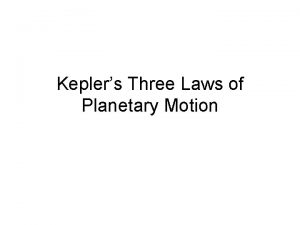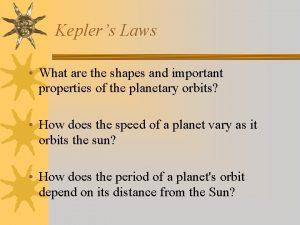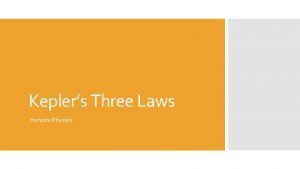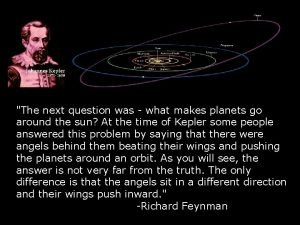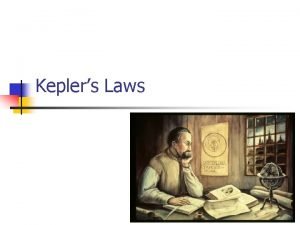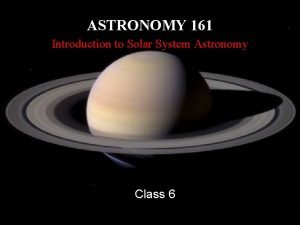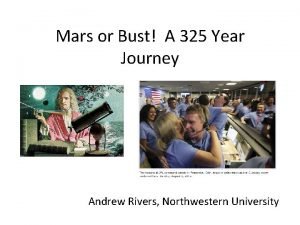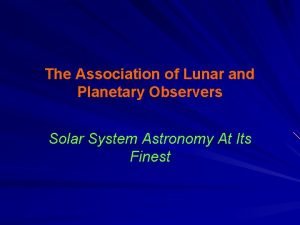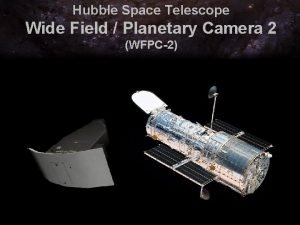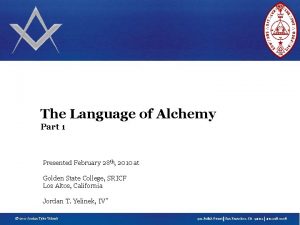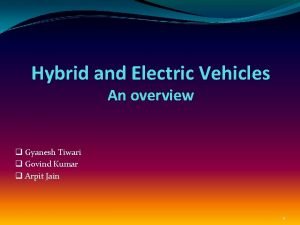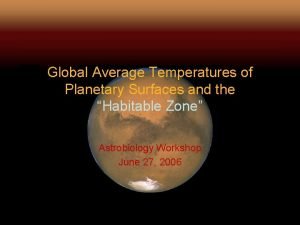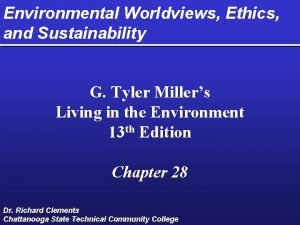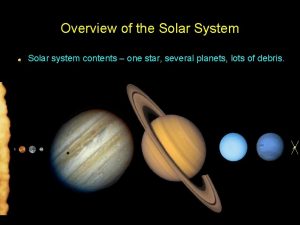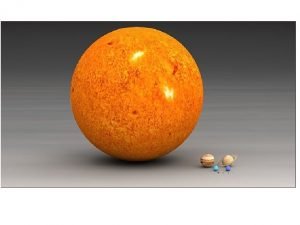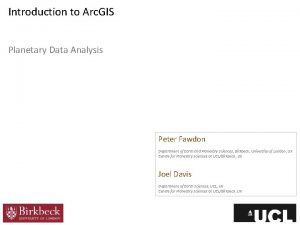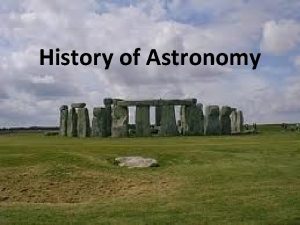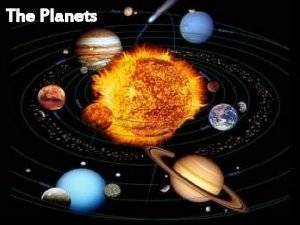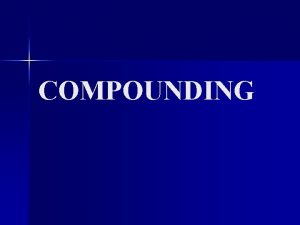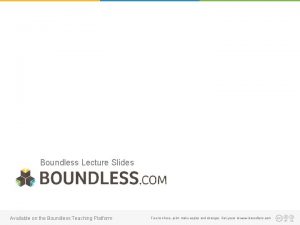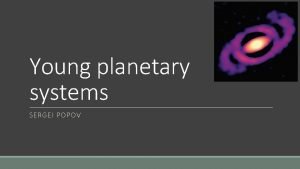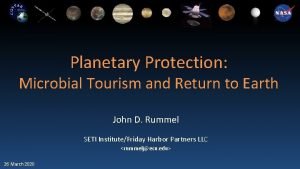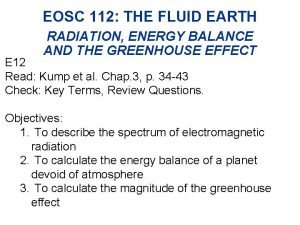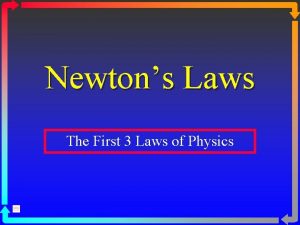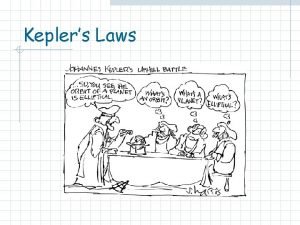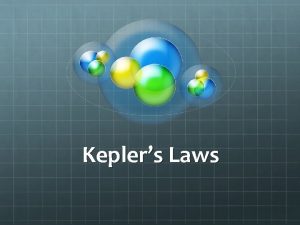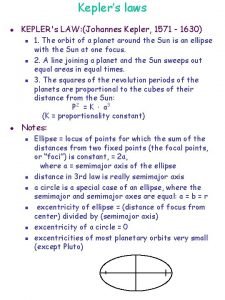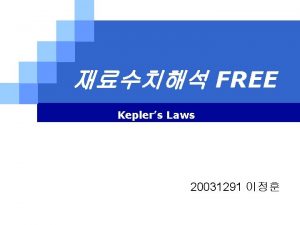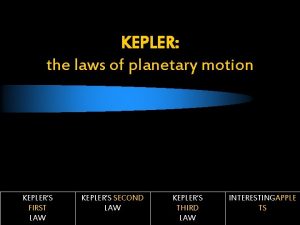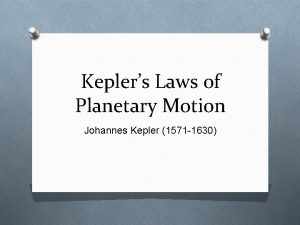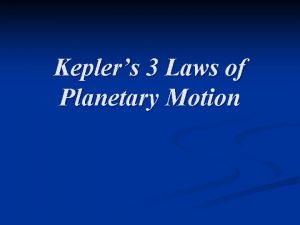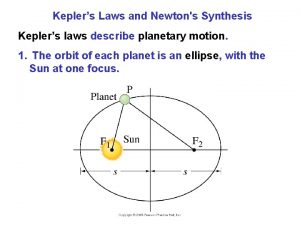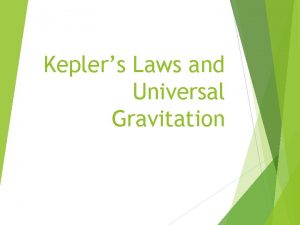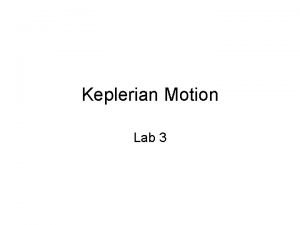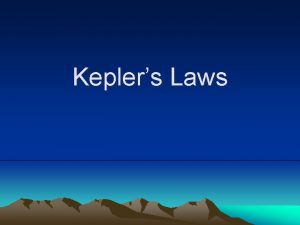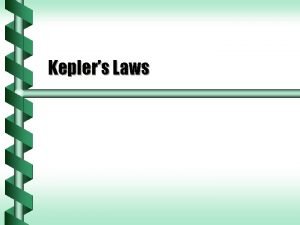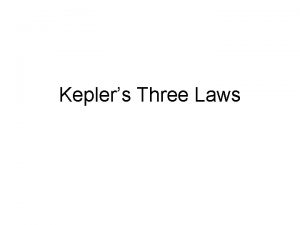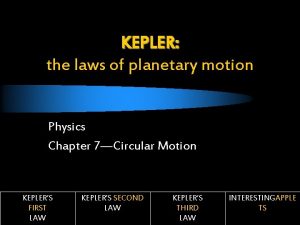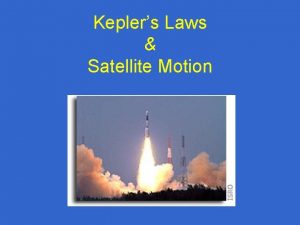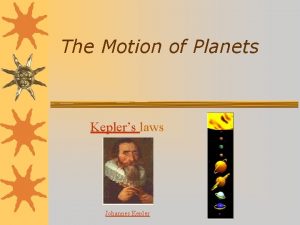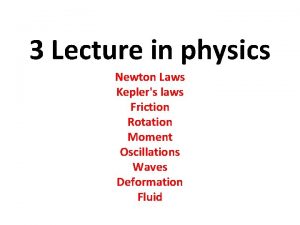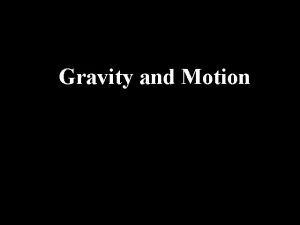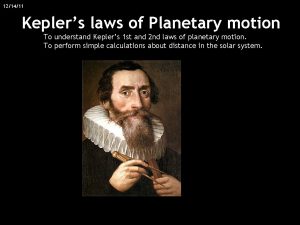Keplers Laws Kepler and the Physics of Planetary






























- Slides: 30

Kepler’s Laws

Kepler and the Physics of Planetary Motion n Laws of Planetary Motion Law 1 - Law of Ellipses n Law 2 - Law of Equal Areas 3 2 n Law 3 - Harmonic Law (r /T = C) n n Kepler’s laws provide a concise and simple description of the motions of the planets

Kepler’s First Law

The Law of Ellipses: The planets move in elliptical orbits with the Sun at one focus.

The Ellipse Semi-major Axis = ½ Major Axis aphelion Ma jor is Ax 90° Focus Points Center o Min is x r. A e=0 perfect circle e=1 flat line perihelion

Verifying Kepler’s 1 st aphelion L 1 + L 2= L 3 + L 4 ? ? P 2 L 3 P 1 L 4 Center L 2 perihelion

Kepler’s Second Law As a planet orbits the Sun, it moves in such a way that a line drawn from the Sun to the planet sweeps out equal areas in equal time intervals.


Lunar Orbit of Explorer 35 apoluna Points represent satellite positions separated by equal time intervals. Moon periluna

Verifying Kepler’s 2 nd Area = ½ base X height Equal area in equal time. A 1 = A 2 ? ? A 2 he i ba se gh A 1 t


Kepler’s Third Law The ratio of the average distance* from the Sun cubed to the period squared is the same constant value for all planets. * Semimajor axis r 3 = C T 2

Summarizing Kepler’s Laws Kepler's First Law: Each planet’s orbit around the Sun is an ellipse, with the Sun at one focus. Kepler's Second Law: Line joining planet and the Sun sweeps out equal areas in equal times Kepler's Third Law: The squares of the periods of the planets are proportional to the cubes of their semi-major axes or: r 3 = C T 2

Kepler’s Law Questions The Earth is closer to the Sun when it is winter in the Northern hemisphere than in summer. July and January both have 31 days. In which month, if either, does the Earth move through a longer distance in its orbit? The Earth moves a longer distance in January since it is moving faster since it is closer to the Sun. We can also see that this comes out of 1. Kepler’s 2 nd Law.

Kepler’s Law Questions 2. Kepler’s first law indicates that planets travel in elliptical orbits. This is intimately related to the fact that the gravitational force varies as the inverse square of the separation between the Sun and the planet. Suppose the gravitational force varied as the inverse cube rather than the inverse square. This allows for some new types of orbits. What about the second and third laws? Will they change if the force depends on the inverse cube of separation? Kepler’s 2 nd Law wouldn’t change because it comes out of conservation of angular momentum which would remain in tact. Kepler’s 3 rd Law would change.

Kepler’s Law Questions 3. A comet is in a highly elliptical orbit around the Sun. The period of the comet’s orbit is 90 days. Which of the following statements is true about the possibility of a collision between the comet and the Earth? A) Collision is not possible. B) Collision is possible C) Not enough information given We can see from Kepler’s 3 rd Law that the Earth’s orbit keep a much larger distance from the Sun than the Comet’s orbit

Kepler’s Law Questions A satellite moves in an elliptical orbit about the Earth such that, at perigree and apogee positions, the distances from the Earth’s center are, respectively, D and 4 D. The relationship between the speeds at these two positions is a) vp = v a c) vp = 4 va vp = 2 va d) va = 2 vp b) Since angular momentum is conserved, Lp=La mvp. D=mva(4 D)

Problem 1 -Kepler’s Laws Plaskett’s binary system consists of two stars that revolve in a circular orbit about a center of mass midway between them. This means that the masses of the two stars are equal. If the orbital velocity of each star is 220 km/s and the orbital period of each is 14. 4 days, find the mass M of each star.

Problem 1


Problem 2 -Kepler’s Laws Io, a satellite of Jupiter, has an orbital period of 1. 77 days and an orbital radius of 4. 22 x 105 km. From these data, determine the mass of Jupiter.


Problem 3 - Kepler’s Laws Two planets X and Y travel counterclockwise in circular orbits about a star. The radii of their orbits are in the ratio 3: 1. At some time, they are alligned as shown making a straight line with the star. During the next five years, the angular displacement of planet X is 90 degrees. Where is planet Y at this time?

Problem 3


5. Universal Laws of Motion “If I have seen farther than others, it is because I have stood on the shoulders of giants. ” Sir Isaac Newton (1642 – 1727) Physicist

Newton’s Universal Law of Gravitation Isaac Newton discovered that it is gravity that plays the vital role of determining the motion of the planets - concept of action at a distance. Gravity is the force that results in centripetal acceleration of the planets.

Orbital Paths n n Extending Kepler’s Law #1, Newton found that ellipses were not the only orbital paths. possible orbital paths n n n ellipse (bound) parabola (unbound) hyperbola (unbound)

Newton’s Universal Law of Gravitation Between every two objects there is an attractive force, the magnitude of which is directly proportional to the mass of each object and inversely proportional to the square of the distance between the centers of the objects.

Newton’s Universal Law of Gravitation G=6. 67 x 10 -11 m 3/(kg s 2)
 3 laws of planetary motion
3 laws of planetary motion Kepler law
Kepler law Keplers three laws
Keplers three laws Kepler's law of planetary motion formula
Kepler's law of planetary motion formula Kepler's law of planetary motion
Kepler's law of planetary motion Keplers phase funnel
Keplers phase funnel Kepler's laws
Kepler's laws How does newton's law of gravity extend kepler's laws
How does newton's law of gravity extend kepler's laws Association of lunar and planetary observers
Association of lunar and planetary observers Wide field and planetary camera 2
Wide field and planetary camera 2 Charles de secondat
Charles de secondat Zosimos of panopolis
Zosimos of panopolis Prius planetary gear animation
Prius planetary gear animation Planetary temperature calculator
Planetary temperature calculator Environmental worldviews
Environmental worldviews Solar system contents
Solar system contents Planetary systems
Planetary systems Planetarypositionstoday
Planetarypositionstoday Planetary data analysis
Planetary data analysis Mars jupiter and saturn show retrograde motion because
Mars jupiter and saturn show retrograde motion because Which factor causes global wind patterns?
Which factor causes global wind patterns? Planetary management worldview definition
Planetary management worldview definition Law of planetary motion
Law of planetary motion Planetary mixer definition
Planetary mixer definition Environmental worldviews ethics and sustainability
Environmental worldviews ethics and sustainability Planetary model
Planetary model Planetary disc
Planetary disc Planetary protection
Planetary protection Nasa planetary science
Nasa planetary science Planetary energy balance
Planetary energy balance ßwe
ßwe
